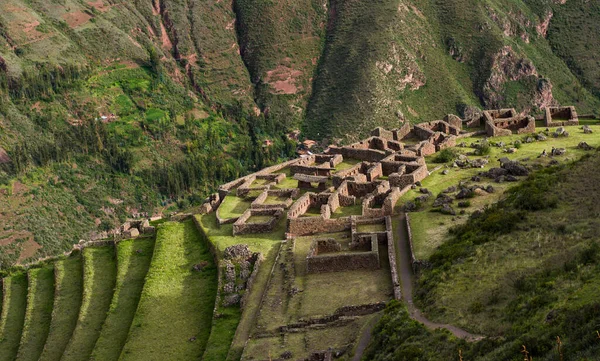Inca myths and legends laid bare
In the heart of the Peruvian Andes, near the majestic city of Machu Picchu, lies a mysterious and historic site known as Llaqtapata. This ancient city, which means “High Town” in Quechua, is an archaeological treasure that has enchanted explorers and scholars for decades. But Llactapata is much more than a series of ruins; it is a place where Inca myths and legends come to life, revealing a rich and intriguing narrative about the civilization that ruled this region for centuries.
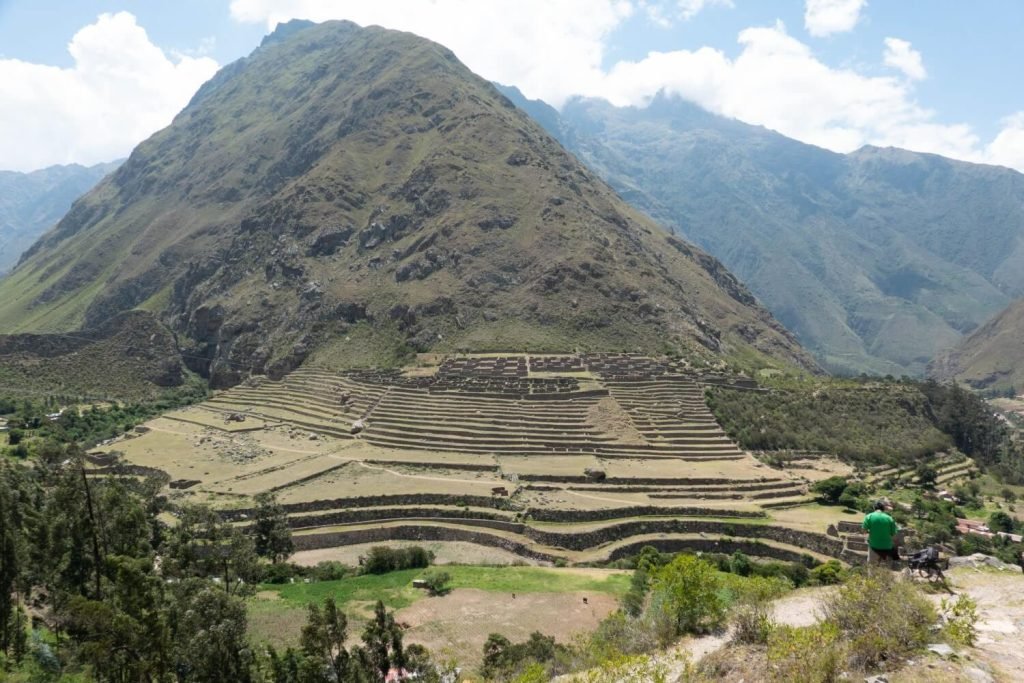
The location of Llaqtapata and its importance
Llaqtapata is strategically located on the slopes of the Peruvian mountains, at an altitude of approximately 2,840 meters above sea level. Its location offers spectacular views of the majestic mountains, lush forests and the valley of the Urubamba River, which meanders through the Andes. However, the site is most famous for its connection to Machu Picchu, which is only a few kilometers away and can be seen from its ruins.
The importance of Llaqtapata lies in its function as a strategic observation point. The Incas, who were noted for their architectural and urban planning skills, used Llaqtapata to monitor the movement of foreigners and possible invaders in the region. Its privileged location allowed the Incas to have a more effective control over the Urubamba River valley and the trade routes that crossed it.
Inca mythology and legends in Llaqtapata
Llaqtapata is also replete with Inca myths and legends that shed light on the spirituality and worldview of this ancient civilization. The Incas were deeply religious and believed that the gods inhabited the mountains and rivers. Llaqtapata, with its panoramic view of the mountains and its proximity to Machu Picchu, played a crucial role in many of these myths.
One of the most famous legends associated with Llaqtapata is the story of Inti, the Sun God. The Incas believed that Inti was born in the nearby mountains and that Llaqtapata was a sacred place where special rituals were performed to honor the sun god. The ruins of Llaqtapata include agricultural terraces that were used to grow food for offerings to Inti and other deities.
Discovery and research in Llaqtapata
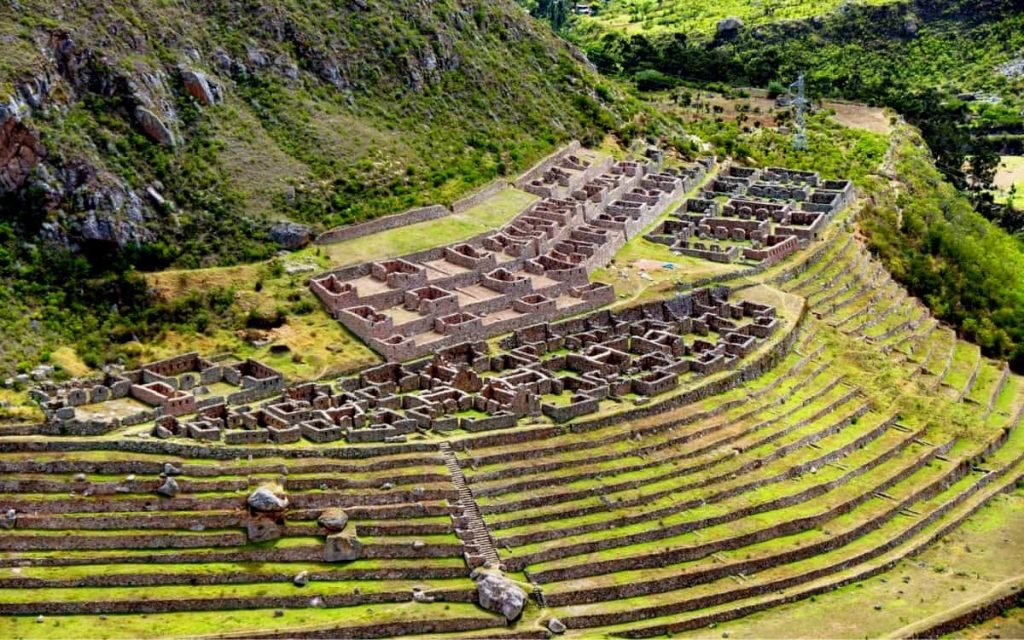
Although locals have known about Llaqtapata for centuries, its historical and archaeological importance became more widely recognized in the 20th century. Since then, archaeologists and historians have carried out detailed excavations and studies at the site, revealing long-buried secrets.
The discovery of Llaqtapata has brought to light not only its strategic importance, but also the cultural and spiritual richness of the Incas. The artifacts found include ceramics, sculptures and ritual objects that offer information about the daily life and religious practices of this ancient civilization.
Conclusion
Llaqtapata is a living testimony to the grandeur and complexity of the Inca civilization. As we explore the ruins and listen to the legends that echo in the mountains, we are transported to a world where the gods walked among mortals and the mountains held deep secrets. This magical place reminds us that, even after centuries, the history and culture of the Incas continues to fascinate and inspire us to discover more about this fascinating civilization that once reigned over the Peruvian Andes.
Llaqtapata: A spiritual journey through sacred ruins
Deep in the majestic mountains of the Peruvian Andes, where time seems to have frozen, lies a place that transcends the boundaries of history and spirituality. It is a spiritual journey through sacred ruins that reveals not only the architectural grandeur of the Incas, but also the depth of their spiritual connection to the earth and the cosmos.
The site of Llaqtapata and its spiritual relevance
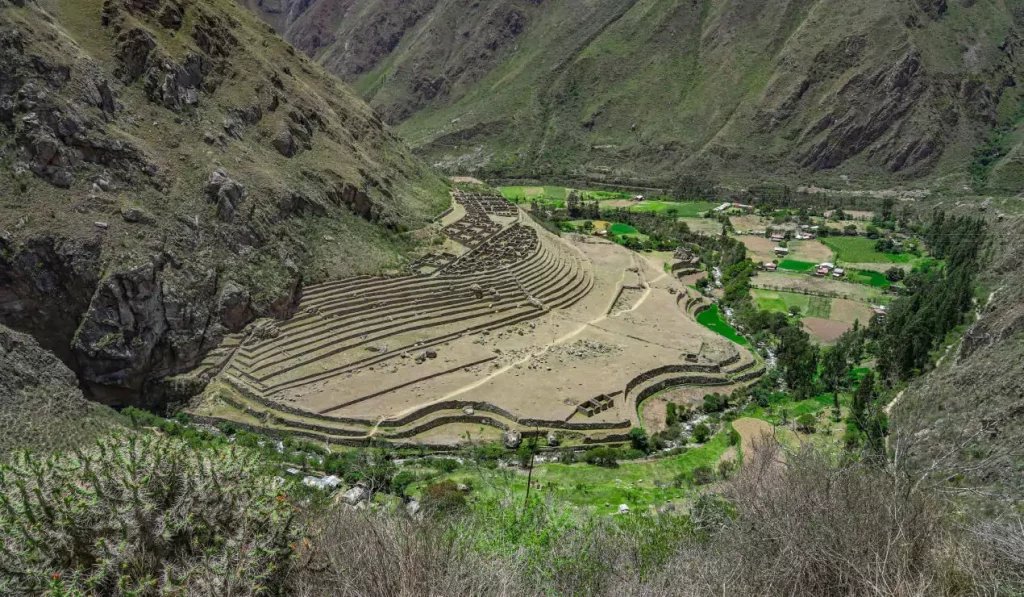
Llaqtapata is strategically located on the slopes of the mountains, overlooking the majestic Urubamba River valley and the enigmatic city of Machu Picchu, which is hidden nearby. Its location is not only geographically impressive, but also loaded with spiritual significance for the Incas. The mountains, rivers and land were believed to be inhabited by powerful deities, and Llaqtapata was a place where this sacred connection was made tangible.
Inca mythology and rituals in Llaqtapata
Spirituality was a fundamental element in the life of the Incas, and Llaqtapata was one of the places where this spirituality was celebrated and lived. The Incas worshipped the sun god, Inti, and believed that the mountains were divine abodes. Special rituals were held at Llaqtapata to honor Inti and to ask for protection and blessings for the land and its people.
The carefully constructed agricultural terraces of Llaqtapata were a testament to the agricultural skills of the Incas and were used not only to produce food, but also to make offerings to the gods. The sculptures and ritual objects found in the ruins attest to the importance of ritual and spirituality in the daily life of this ancient civilization.
A contemporary spiritual journey
Today, Llaqtapata is a place that continues to attract spiritual seekers and curious travelers in search of a unique experience. Contemporary spiritual travel at Llaqtapata involves more than just contemplating the impressive ruins; it is an opportunity to connect with the spiritual energy that permeates the region.
Visitors can perform meditations, rituals of gratitude to the earth and nature, or simply contemplate the breathtaking views and marvel at the profound connection between the Incas and the cosmos. The mountains, valleys and ruins of Llaqtapata serve as catalysts for a unique spiritual experience, where one can feel the presence of ancient Inca deities and the harmony between humanity and nature.
Llaqtapata is a gateway to spirituality and a window to the deep connection between the Incas and the world around them. A spiritual journey through the sacred ruins of Llaqtapata is an experience that invites us to reflect on our own relationship with the earth and the cosmos, reminding us that even in the ruins we can find the spiritual transcendence and enduring beauty of Inca culture.
The architectural influence of Llaqtapata: a study of Inca buildings.
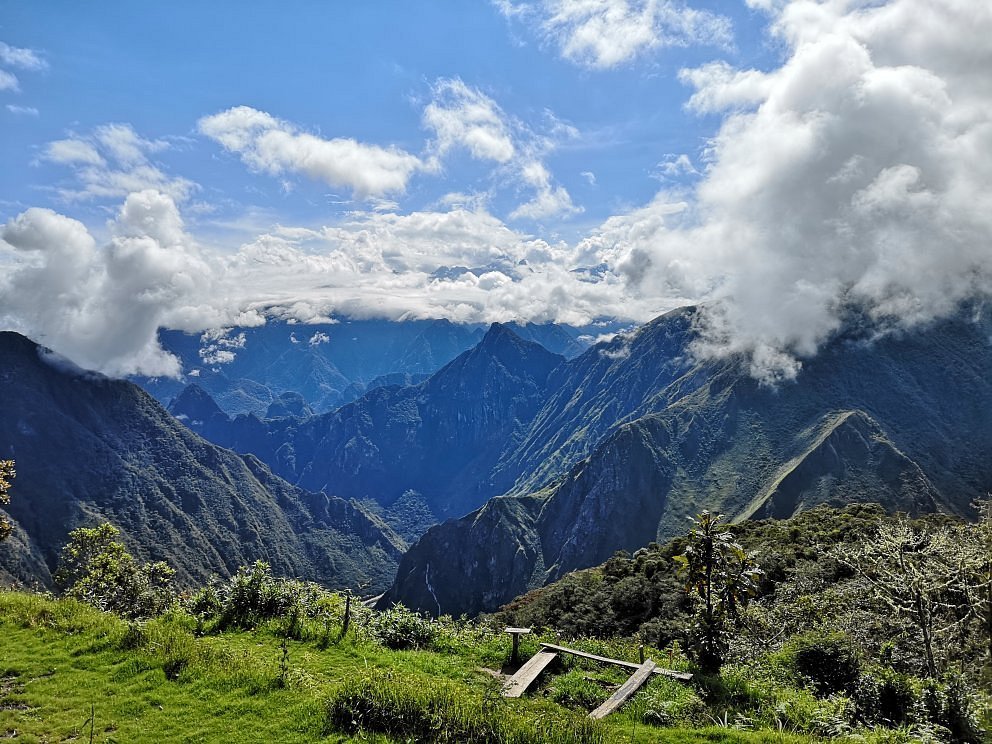
Llaqtapata, located on the slopes of the majestic mountains of the Peruvian Andes, is much more than a collection of ancient ruins; it is an enduring testimony to the extraordinary architectural skill of the Incas. By studying the Inca constructions of Llaqtapata, we are transported to a time when this ancient civilization dominated the art of construction, leaving an architectural legacy that endures to this day.
Inca Engineering in Llaqtapata
The Inca constructions of Llaqtapata show remarkable engineering that continues to intrigue architects and scholars. The Incas were masters in the creation of solid and functional structures that resisted the passage of time and inclement weather. The walls of Llaqtapata stand out for the perfect fit of the stones, without using mortar, a technique that allowed the structures to expand and contract without breaking. This constructive precision is a distinctive feature of Inca architecture.
Integration into the natural landscape
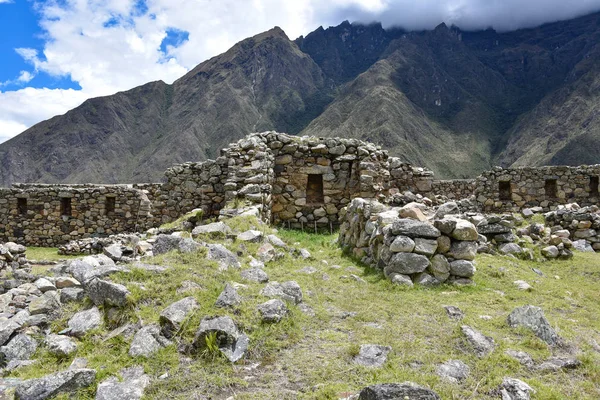
One of the most impressive aspects of Inca architecture at Llaqtapata is the way the buildings blend harmoniously with the surrounding landscape. The Incas deeply revered nature and believed that the mountains, rivers and land were inhabited by deities. Therefore, when building in Llaqtapata, they respected the topography and natural aesthetics of the region.
The agricultural terraces carefully dug into the mountain slopes not only provided space for cultivation, but were also a demonstration of the Incas’ mastery of landscape architecture. They allowed food production in a difficult environment and demonstrated the Incas’ commitment to balancing human needs with respect for the land.
Cultural and spiritual importance
The buildings at Llaqtapata also have a deep cultural and spiritual significance. The layout of the structures and the ritual objects found in the excavations reveal the importance of ritual and spirituality in Inca life. Llaqtapata was a place where special rituals were held to honor deities such as Inti, the sun god.
The study of the Inca buildings at Llaqtapata not only reveals the architectural mastery of the Incas, but also provides insight into their worldview and religious practices. Each precisely placed stone and carefully carved terrace testifies to the deep connection of the Incas with the spiritual world and the land that sustained them.
Conclusion
Llaqtapata is a true architectural treasure that reminds us of the greatness of the Inca civilization. By studying its constructions and techniques, we not only appreciate the technical skill of the Incas, but also connect with a culture that valued harmony with nature and spirituality. Llaqtapata’s architectural influence continues to inspire architects and scholars to seek a balance between human functionality and reverence for nature in their own creations.

